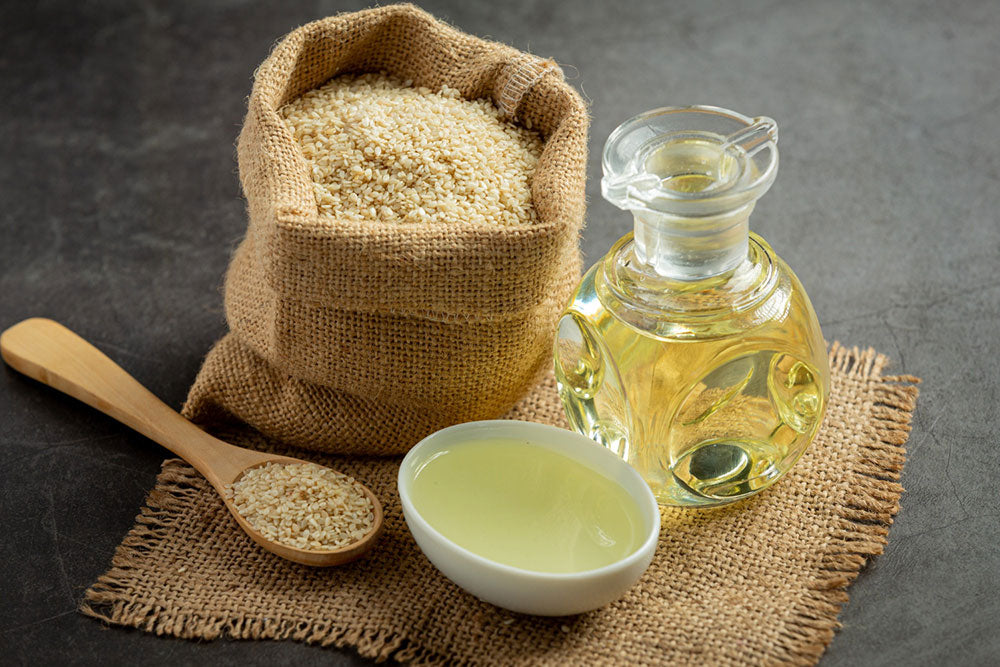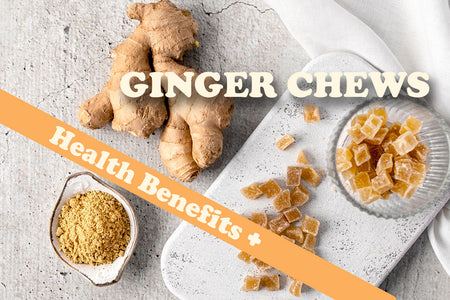Toasted vs Untoasted Sesame Oil: The Differences and Benefits

When it comes to cooking oils, sesame oil stands out for its rich and distinct flavor. However, there are two types of sesame oil that often confuse consumers: toasted and untoasted sesame oil. Both varieties have their unique characteristics and uses in the culinary world. In this article, we will delve into the differences between toasted and untoasted sesame oil, exploring their flavors, production methods, health benefits, and cooking applications. So, let's dive in and unravel the secrets of these two delightful oils!
What is Toasted Sesame Oil?
Toasted sesame oil is a flavorful oil derived from roasted sesame seeds. The toasting process enhances the natural nutty aroma of the seeds, resulting in a deep, rich flavor that adds complexity to various dishes. It is widely used in Asian cuisines, particularly in Chinese, Korean, and Japanese dishes, to impart a distinct taste.
The Production Process of Toasted Sesame Oil
To create toasted sesame oil, the sesame seeds are first cleaned and dried thoroughly. Then, they are gently roasted to bring out their unique flavors. The roasted seeds are then pressed to extract the oil, which is later filtered and bottled. This meticulous process ensures that the oil retains its full-bodied taste and aroma.

The Flavor Profile of Toasted Sesame Oil
Toasted sesame oil boasts a robust, nutty flavor that is highly aromatic. Its taste is deep and savory, with hints of roasted sesame seeds. The intensity of the flavor can vary depending on the brand and quality of the oil. When used in moderation, toasted sesame oil can elevate the taste of dishes, providing a delightful umami undertone.
Health Benefits of Toasted Sesame Oil
Toasted sesame oil offers various health benefits due to its nutrient composition. It contains essential fatty acids, such as omega-6 and omega-9, which are beneficial for heart health. Additionally, it is a good source of vitamin E, an antioxidant that helps protect the body's cells from damage caused by free radicals. Incorporating moderate amounts of toasted sesame oil into your diet can contribute to a balanced and nutritious lifestyle.
Cooking with Toasted Sesame Oil
Toasted sesame oil is a versatile ingredient that can enhance the flavor of a wide range of dishes. Here are some popular cooking applications for toasted sesame oil:
Stir-Frying and Sautéing
Toasted sesame oil is often used in stir-fries and sautés to infuse the dish with its distinctive nutty taste. Its high smoke point makes it suitable for high-temperature cooking, allowing you to achieve that delicious wok hei (the breath of the wok) flavor.
Marinades and Dressings
Add a drizzle of toasted sesame oil to your marinades and dressings to elevate their flavors. It imparts a rich and savory note that complements both meat and vegetable-based marinades, as well as salad dressings.
Dipping Sauces and Condiments
Create flavorful dipping sauces by combining toasted sesame oil with soy sauce, garlic, and other seasonings. It adds depth and complexity to the sauce, making it a delightful accompaniment for dumplings, spring rolls, and other appetizers.
Noodle and Rice Dishes
Whether you're making fried rice, noodle stir-fries, or even sushi rolls, a touch of toasted sesame oil can take your dish to the next level. It adds an aromatic quality and enhances the overall taste of the dish.
Remember that toasted sesame oil is potent, so a little goes a long way. It is best used as a finishing touch or added towards the end of the cooking process to preserve its flavor.
What is Untoasted Sesame Oil?
Untoasted sesame oil, also known as light sesame oil or pure sesame oil, is made from raw, unroasted sesame seeds. Unlike its toasted counterpart, untoasted sesame oil has a lighter and more subtle flavor. It is commonly used as a cooking oil in various cuisines, including Indian, Middle Eastern, and Mediterranean.

The Production Process of Untoasted Sesame Oil
The production of untoasted sesame oil involves a similar extraction process as toasted sesame oil. However, the seeds used are raw and unroasted. They are carefully cleaned, dried, and then pressed to extract the oil. The resulting oil is then filtered to remove any impurities, resulting in a clear and light-colored oil.
The Flavor Profile of Untoasted Sesame Oil
Compared to toasted sesame oil, untoasted sesame oil has a milder and more neutral flavor profile. It has a clean, delicate taste with subtle hints of sesame. This makes it a versatile option in cooking, as it doesn't overpower the other flavors in a dish.
Health Benefits of Untoasted Sesame Oil
Similar to toasted sesame oil, untoasted sesame oil offers several health benefits. It is a good source of healthy fats, including polyunsaturated and monounsaturated fats, which can support heart health when consumed as part of a balanced diet. Additionally, untoasted sesame oil contains vitamin K, which plays a role in blood clotting and bone health.

Cooking with Untoasted Sesame Oil
Untoasted sesame oil is commonly used in cooking due to its light flavor and versatility. Here are some ways to incorporate untoasted sesame oil into your culinary endeavors:
Salad Dressings and Vinaigrettes
Add a drizzle of untoasted sesame oil to your homemade salad dressings and vinaigrettes for a subtle nutty taste. It pairs well with greens, citrus flavors, and other fresh ingredients.
Lightly Sauteing and Frying
Since untoasted sesame oil has a higher smoke point than toasted sesame oil has a higher smoke point than toasted sesame oil, it can be used for light sautéing and stir-frying. It imparts a delicate flavor to vegetables, seafood, and tofu, without overpowering the dish.
Baking and Roasting
Untoasted sesame oil can also be used in baking and roasting. It can add a touch of nuttiness to baked goods like cookies, bread, and pastries. When drizzled over roasted vegetables or meats, it enhances the flavors and adds a subtle richness.
Dips and Spreads
Create flavorful dips and spreads by combining untoasted sesame oil with herbs, spices, and other ingredients. It can be used as a base for hummus, sauces, and even as a substitute for butter on toast.

Toasted vs Untoasted Sesame Oil: Which One Should You Choose?
The choice between toasted and untoasted sesame oil ultimately depends on the flavor profile you desire and the specific recipe you're preparing. Here are some considerations to help you make an informed decision:
Flavor Intensity: Toasted sesame oil has a robust, nutty flavor, while untoasted sesame oil has a milder, more neutral taste.
Cooking Applications: Toasted sesame oil is ideal for adding a distinctive flavor to stir-fries, marinades, and dressings. Untoasted sesame oil, on the other hand, is more versatile and can be used for various cooking methods, including sautéing, baking, and roasting.
Recipe Compatibility: Consider the other ingredients in your recipe. If you want the sesame flavor to shine, toasted sesame oil may be the better choice. If you're looking for a lighter touch, untoasted sesame oil is a suitable option.
Personal Preference: Ultimately, it comes down to personal preference. Experiment with both types of sesame oil to discover which one aligns with your taste preferences.
Conclusion
Both toasted and untoasted sesame oil offer unique flavors and benefits in cooking. Toasted sesame oil brings a rich, nutty taste to dishes, making it popular in Asian cuisines. Untoasted sesame oil, with its milder flavor, is versatile and can be used in various cooking methods. The choice between the two depends on personal preference and the specific recipe at hand. So, whether you're looking to add a robust flavor or a subtle touch of sesame, both oils have a place in your kitchen arsenal. Experiment with them to unlock the delicious potential they offer.
Remember, when purchasing sesame oil, opt for high-quality brands that ensure pure, authentic oils. By incorporating toasted or untoasted sesame oil into your culinary creations, you can elevate the flavors of your dishes and explore the nuances of this ancient and flavorful ingredient.
FAQs about Toasted and Untoasted Sesame Oil
What is the difference between toasted and untoasted sesame oil?
Toasted sesame oil is made from roasted sesame seeds and has a robust, nutty flavor, while untoasted sesame oil is made from raw seeds and has a milder taste.
Can I substitute toasted sesame oil with untoasted sesame oil in recipes?
Yes, you can substitute untoasted sesame oil for toasted sesame oil, but be aware that the flavor profile will be different. Adjust the quantity to match the desired taste.
Which type of sesame oil is more suitable for stir-frying?
Toasted sesame oil is more commonly used for stir-frying as it adds a distinct flavor to the dish.
Does toasting affect the nutritional value of sesame oil?
Toasting sesame seeds can lead to a slight decrease in the nutritional value, including a reduction in vitamin E content. However, both toasted and untoasted sesame oil offer health benefits in their own right.
Can I use untoasted sesame oil for salad dressings?
Yes, untoasted sesame oil can be used for salad dressings. Its lighter flavor allows the other ingredients in the dressing to shine while still adding a subtle nutty note.
How should I store sesame oil to maintain its freshness?
To maintain the freshness of sesame oil, it is best to store it in a cool, dark place, away from direct sunlight and heat sources. Ensure that the bottle is tightly sealed to prevent oxidation and rancidity.






